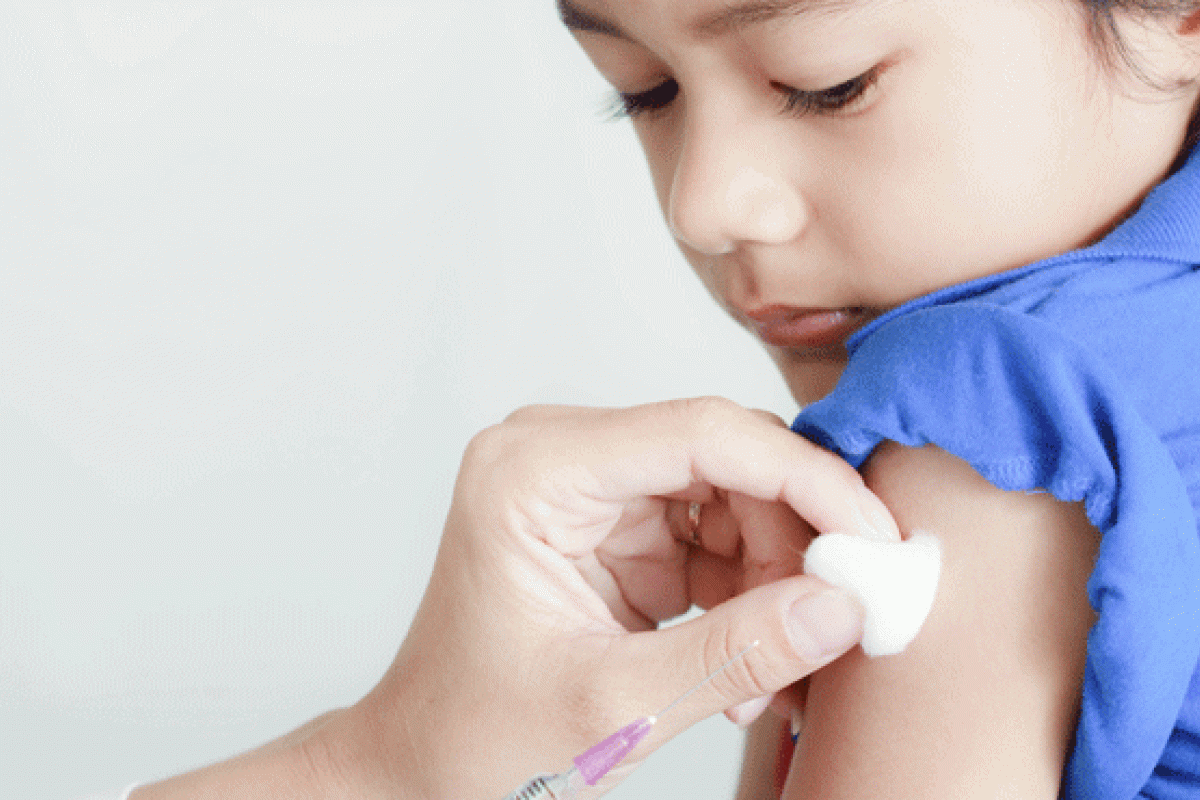

Every year, Children’s Hospital has babies with pertussis, or whooping cough, in the intensive care unit. In most cases, they picked it up from someone who loves them most – an infected older sibling, parent, close relative, or childcare worker.
It’s good to be aware of this risk at back-to-school time, when infectious diseases tend to spike. “Adults who get whooping cough can feel pretty terrible, but they are not going to die,” said Dr. Kathleen Berchelmann, pediatrician at St. Louis Children's Hospital and Washington University School of Medicine and a Mom Docs blogger.
This can make people lax in their attitude toward pertussis vaccinations, both for themselves and for tweens and teens whose earlier protection is wearing off.
Pertussis, a bacterial infection, is highly contagious, and babies are especially vulnerable because their earliest immunizations come in a series at 2, 4 and 6 months. In older children and adults, the extreme coughing makes it hard to catch their breath and they inhale with a “whoop.” Babies, on the other hand, may not cough at all — they may just have life-threatening pauses in breathing.
In addition to the three early doses of the vaccine (which prevents diphtheria, tetanus and pertussis and thus is known as DTaP), kids need two more to have maximum protection: a fourth between 15 and 18 months, and a fifth when the child enters school. “The reason we vaccinate is not because the common illness is so terrible,” Berchelmann said. “It’s because of the severe complications.”
On average, about half of babies hospitalized with pertussis get pneumonia, and about two thirds will have slow or stopped breathing, according to the CDC. One or two of every 100 will die. But plenty of parents choose not to have their children vaccinated, and this is one of the reasons that the disease has risen over the past two decades from something the medical community “thought we were done with,” in Berchelmann’s words, to being a common illness. In fact, whooping cough is now one of the most common vaccine-preventable diseases in the United States.
“I can understand why people might be nervous about vaccines,” Berchelmann said. Back in the day, when pertussis was rare, the vaccine may have been the riskier option. But, Berchelmann said, “It’s not true anymore by a very long stretch.” Now not only do doctors and the CDC recommend all five doses of DTaP for kids, they also are going after the source, those loving siblings and adult caregivers who carry the germs to babies.
The CDC’s 2013 vaccination schedule added reminders for pregnant women to get the adult boosters, called TDaP, because that can offer some protection to their babies. To prevent the disease from spreading among family and community members, “we’re recommending re-vaccinations at age 12 and into adulthood, especially among parents, grandparents and any childcare workers,” Berchelmann said.
These boosters can help against the institutional outbreaks of whooping cough that are fairly common in middle and high schools where immunity is wearing off. And pertussis isn’t the only disease Berchelmann is concerned about.
“We also have measles in St. Louis,” she said. Besides the itchy rash, measles can lead to complications like pneumonia, permanent hearing loss or meningitis. “There’s a huge misunderstanding among the parent community that these diseases are rare or not present,” she said, adding,
“If you choose not to get vaccinated, not only are you putting yourself and your child at risk, you’re also putting young infants at risk.” Her own four children are all fully immunized, and before her fifth child arrives in mid-September, she is planning to have a chat with all four grandparents about the risk of pertussis. “I really do need to remind them to get their vaccines.”

Amy De La Hunt is a journalist and editor who lives in the St. Louis metro area and works across the country as a writer, copy editor, project manager and editorial consultant on everything from fiction books to monthly magazines to blog posts. When she's not chauffeuring her teenage sons to activities, Amy is an enthusiastic amateur cook, landscaper, Latin dancer and traveler. Follow Amy on Instagram @amy_in_words
At this free art program for ages 3-6 the focus is on the process of making art rather than the finished product. Dress to get messy!
Splash and play with your little one in this fun morning activity. No registration is necessary.
Bring your babies and toddlers to this free story time at the Missouri History Museum.
See the Zoo's California sea lions perform acrobatic and athletic feats, including Olympic-style dives on a high-diving platform, flipper walks, frisbee tosses and plenty of surprises. While on stage with the sea lions, the Zoo's trainers explain sea lion behavior and positive-reinforcement training, in addition to the need for conserving the sea lion's ocean habitat.
Storytelling in the Museum is an in-person storytelling event happening at 10:30 a.m. at the Missouri History Museum. This event, perfect for the preschool set, features engaging stories with themes like Juneteenth, Sweet Treats, Summer and more. Storytelling in the Museum is free.
